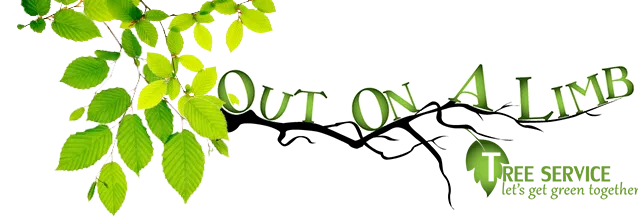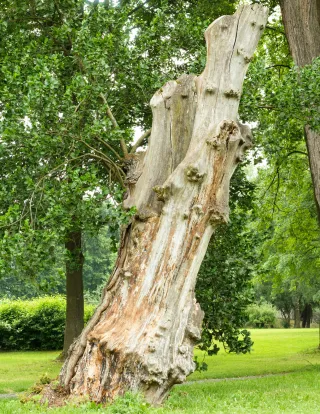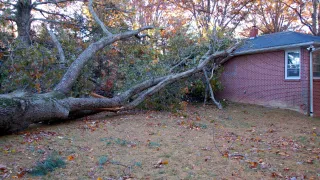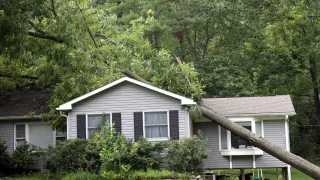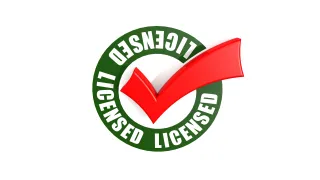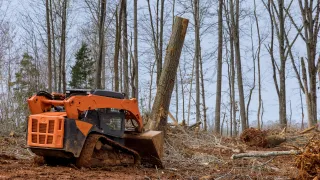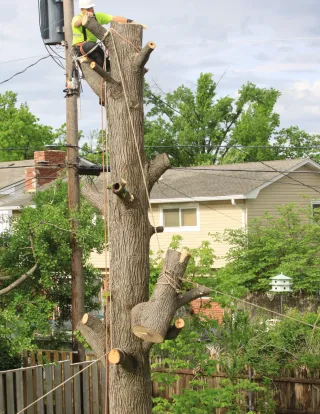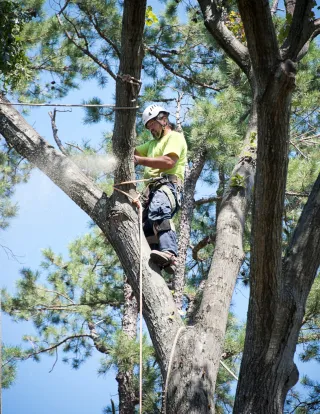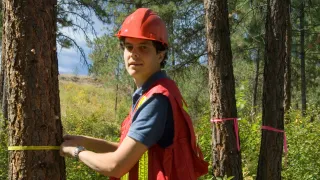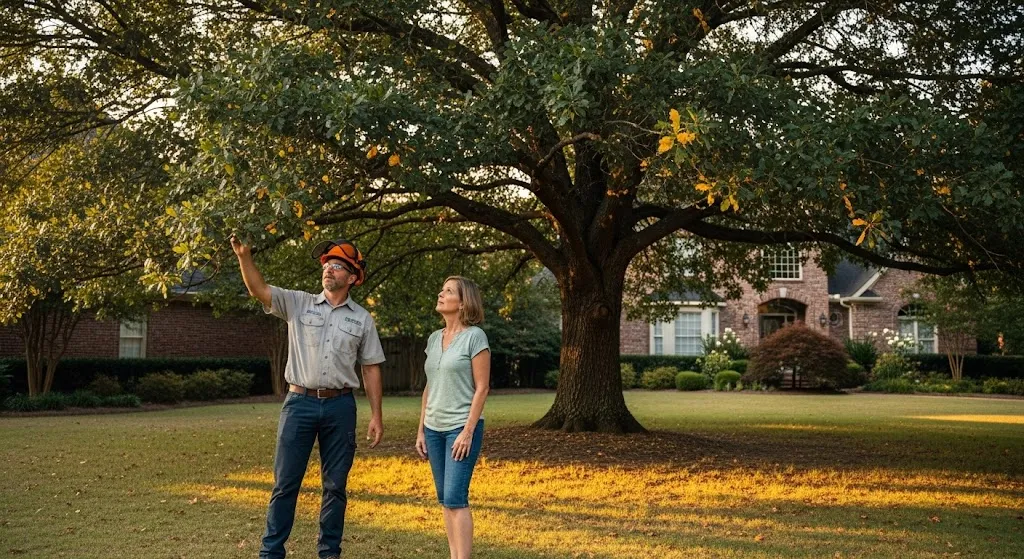
Late Summer Tree Care: What Your Trees Need Before Fall in Chattanooga
August in Chattanooga can be tough on trees. The heat's been relentless, storms have come and gone, and your trees are getting ready for what comes next. I've been working with trees through enough summers to know this is when small problems can turn into big ones if you're not paying attention.
Why Late Summer Matters for Tree Health
Most folks think tree care happens in spring or fall, but late summer is actually critical. Your trees have been working hard all season – growing, recovering from storms, dealing with drought stress. Now they're starting to prep for dormancy, and that transition can reveal problems you didn't know you had.
I've seen trees that looked fine in June showing serious stress by August. Dead branches become more obvious, pest damage adds up, and root problems that started small can't be ignored anymore. The good news? There's still time to help them before fall.
Water: The Thing Everyone Gets Wrong
Here's what I see constantly: either people are drowning their trees or letting them die of thirst. Both cause problems.
Deep, infrequent watering works best – think once or twice a week, long enough to soak down to the roots. I usually tell folks to count to 30 with the hose running slowly at the base. If you're watering every day with a sprinkler, you're probably not helping much.
Signs your tree needs more water:
Leaves dropping before they should
Wilting during the hottest part of the day
Leaves curling or looking crispy around the edges
New growth looking stunted
But here's the thing – sometimes what looks like drought stress is actually root rot from too much water. If the soil around your tree stays soggy, that's a problem too.
Late Summer Pruning: What You Can and Can't Do
August isn't the ideal time for major pruning, but sometimes you don't have a choice. Dead branches should come off anytime – they're not getting better, and they can cause damage or attract pests.
What you can safely remove in late summer:
Dead, broken, or diseased branches
Branches rubbing against your house or roof
Growth blocking important views or pathways
Water sprouts (those straight shoots growing up from the trunk)
What to wait on:
Major shaping or size reduction (save for dormant season)
Heavy thinning (can stress the tree before winter)
Anything that removes more than 25% of the canopy
If you're not sure what category your situation falls into, it's worth getting a second opinion. I've seen well-meaning homeowners create more problems than they solve with late-season pruning.
Pest Watch: What's Active Right Now
Late summer brings out some tree pests that can cause real damage. In our area, I'm seeing more bagworms, spider mites, and scale insects this time of year.
Bagworms look like little Christmas ornaments hanging from branches – except they're eating your tree from the inside out. If you see them, pick them off by hand if there aren't too many, or call for treatment if they're widespread.
Spider mites show up as tiny webs and yellowing leaves, especially during hot, dry spells. They're hard to see, but the damage isn't – leaves look dusty or bronzed, and you might notice fine webbing.
Scale insects look like small bumps on branches and can slowly kill sections of your tree. They're sneaky because they don't move much, so people often miss them until the damage is obvious.
The key with pests is catching them early. Once they're established, treatment gets more complicated and expensive.
Storm Damage Assessment: What Can Wait, What Can't
If you had storm damage earlier this summer, now's a good time to reassess. Some things that looked terrible in June might be healing fine. Other damage that seemed minor might need attention before winter.
Immediate concerns:
Hanging branches that could fall
Splits in major branches that are getting worse
Root damage causing the tree to lean
Bark damage that goes all the way around the trunk
Things that might heal on their own:
Surface bark scrapes (if the tree is otherwise healthy)
Small broken twigs (trees shed these naturally)
Leaf damage (new leaves will replace them)
When I'm looking at storm damage, I'm thinking about what winter weather might do to existing problems. A split that's stable now might not handle ice load in January.
Fall Prep: Setting Up for Success
The work you do now makes a difference in how your trees handle whatever winter throws at them. Proper watering through August and September helps trees store energy for dormancy. Removing dead material eliminates places for pests and diseases to overwinter.
But don't go overboard. Trees need time to prepare for dormancy, and too much intervention can actually interfere with that process.
When to Call for Help
I know everyone wants to handle things themselves, but some situations really do need professional attention. If you're dealing with large branches, anything near power lines, or tree work that requires a ladder, it's worth getting help.
Also, if you're seeing problems but can't figure out what's causing them, a professional assessment might save you time and money in the long run. Sometimes what looks like one problem is actually something completely different.
The Bottom Line
Late summer tree care isn't about major interventions – it's about paying attention and handling the small stuff before it becomes big stuff. Water appropriately, remove obvious problems, and watch for pest activity. Most of the time, that's enough to get your trees through to fall in good shape.
If you're dealing with something that doesn't feel straightforward, or if you just want a second opinion on what you're seeing, give us a call or text at (423) 443-4533. Sometimes a quick conversation can save you a lot of worry – or help you catch something important before it gets worse.
